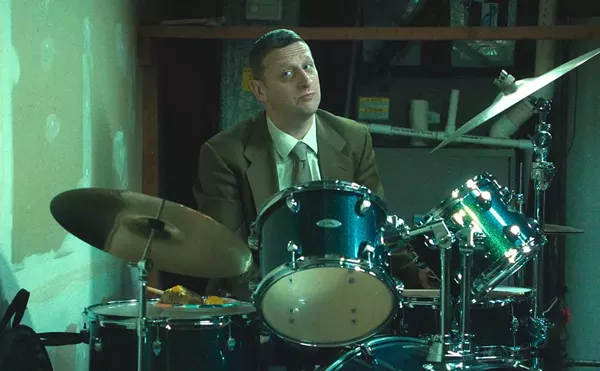
Audio By Carbonatix
[
{
"name": "GPT - Leaderboard - Inline - Content",
"component": "35519556",
"insertPoint": "5th",
"startingPoint": "3",
"requiredCountToDisplay": "3",
"maxInsertions": 100,
"adList": [
{
"adPreset": "LeaderboardInline"
}
]
}
]
Nobody seems sure about why it happened the way it did, but it appeared at first to have been an attempted robbery that somehow got out of hand. Generally lone gunmen don’t rob buses because it’s just too risky. But there he was, Sandro do Nascimento, a man in his early 20s, holding the passengers of bus No. 174 hostage in an affluent section of Rio de Janeiro on June 12, 2000. If robbery was the motive, he’d gotten in way over his head. On the other hand, maybe it was meant to be a hijacking all along, an elaborately theatrical and public suicide by a man at the end of his tether. Because it soon became evident, as the police and media converged on the scene, that Sandro was determined that his situation would come to a violent end. He threatened to shoot the passengers one by one if his demands weren’t met, and his only demands were for more weaponry.
Director José Padilha has taken this incident — on its surface just another example of senseless urban violence — and used it as the starting point of an ambitious documentary which explores Sandro’s background in the wider context of Rio’s inability to deal with its poverty and ensuing crime. It’s both an impressive piece of investigative reporting and of imaginative filmmaking. One begins by seeing Sandro as a crazed thug disrupting the lives of innocent people and ends seeing him as not exactly sympathetic, but rather as someone who had been badly mistreated, when not being neglected, by public institutions which had no idea of how to handle him. You begin to see that, apart from the sociopaths, psychopaths and other natural miscreants, a society gets the criminals it deserves.
Bus No. 174 never goes anywhere because it’s quickly surrounded by gawkers, the police being too inefficient to seal off the area. In fact, the cops are shown to be generally under-trained and unmotivated. (Apparently in Rio it’s a last-resort job for people who desperately need the money.) The elite SWAT team seems more professional but is ineffective, missing several opportunities to take Sandro out via sniper. (The SWAT guys were being restrained by some high government official, who had decided that a head shot on prime-time TV would be too graphic for most viewers, which shows you how clueless high government officials can be.)
Since Sandro’s last stand was extensively covered by the Rio media, Padhila has a lot of footage to work with and he uses it artfully, especially during the chaotic climax, sorting out, through slow-motion and various camera angles, all the bad split-second decisions that capped the tragedy. The film is structured so that it moves back and forth from the tense present of the hijacking to the grim story of Sandro’s past, told by relatives and acquaintances he made on the street, all of whom seem mystified by his frenzied final act. He was, they say, a quiet introspective boy, not prone to violence — in other words, a classic time bomb. Bus 174 is the compelling story of how that bomb was constructed and what happened on the day it finally went off.
In Portuguese, with subtitles. Showing exclusively at the Detroit Film Theatre (inside the DIA, 5200 Woodward Ave., Detroit), Friday-Sunday, Nov. 21-23. Call 313-833-3237.
Richard C. Walls writes about film for Metro Times. E-mail letters@metrotimes.com.





